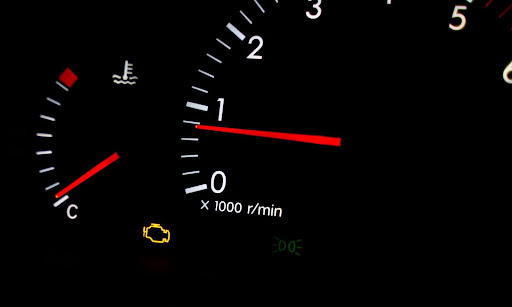
As most local drivers already know, waiting too long between one oil change in Hays County, TX, and the next can cause problems for your vehicle. But even if you haven’t noticed any obvious red flags, it still might be time for oil change service.
No matter how smoothly your car seems to be running, it needs immediate professional attention once its oil change light or oil pressure light turns on. If you’re wondering what these lights mean or what to do when they illuminate, read on for our complete guide on this subject.
Your Oil Warning Lights: A Closer Look
Many vehicles don’t have just one dashboard light meant to indicate oil-related problems. Instead, you might see one of two lights activate in situations like these:
Oil Change Light
The oil change light lets drivers know that their vehicles are using motor oil that’s no longer fully functional. When this light turns on, you’ll need to stop by a local auto shop to get a full-service oil change.
Does your oil change light turn on for a second or two when you turn on your vehicle? If so, there’s nothing to fear — this is just a method used to test the bulbs that illuminate your dashboard warning lights. However, an oil change light that stays lit for more than a few seconds is something you’ll need to address.
Oil Pressure Light
Though you should take steps to deal with an active oil change light, this isn’t as time-sensitive as other warning lights. Take your oil pressure light, for example: When this light illuminates, there’s a good chance that you’re facing a much more urgent situation.
An engine that’s running correctly will receive a constant flow of oil from the oil pump, allowing its moving parts to stay lubricated. If anything interrupts that oil flow, your engine could suffer from serious damage as a result. When your vehicle is dealing with low oil pressure, your oil pressure light will let you know there’s an issue to address.
Other Ways to Protect Your Car’s Oil
Thanks to your vehicle’s oil change and oil pressure lights, you’ll usually know when your car encounters problems involving motor oil. But since these systems and their sensors can fail, you can’t rely on them exclusively. Instead, be sure to:
Follow a Schedule for Oil Changes
Many drivers stick to the conventional wisdom for oil changes by scheduling this service every 3,000 miles or three months. Of course, this is just a suggestion — not a law. Therefore, you may benefit from following a different oil change schedule.
While trying to determine your ideal oil change interval, consider factors such as:
- The type of oil you use. The various oil types on the market differ drastically in terms of performance and life span. If you use conventional oil, you’ll have a shorter oil change interval than you would with synthetic oil changes.
- The conditions you drive in. Hays County is infamous for its hot summers, and these temperatures can affect your vehicle’s oil. To counteract that, consider getting oil changes more frequently than you would otherwise.
- The way you drive. If you commonly tow heavy loads or drive on dirt roads, you have severe driving habits. The best way to deal with this situation is by doubling your oil change frequency.
- The age of your vehicle. Generally speaking, the older a car is, the more often it will need oil changes.
Check Your Own Oil
Manual oil checks are a quick, accurate way to gauge your vehicle’s oil level. To take care of this task, put your car in park and let it cool down for a few minutes before turning it off. Next, find your dipstick in the oil reservoir under your vehicle’s hood, take it out, and wipe off any oil left on it.
Then, put your dipstick back into the reservoir and remove it once again. At this point, you’ll be able to determine your vehicle’s oil level — if it’s between two markings on your dipstick or within a crosshatched section, you’re probably in good shape. But if your oil is below this area, it’s wise to set up an oil change ASAP.
Resetting Your Vehicle’s Oil Change Indicator
When you get an oil change, your oil change light has done its job — so you don’t need it to stay illuminated. To turn this light off after an oil change, you can simply reset your oil life calculation system.
In most cases, manually resetting this system involves holding down a few buttons on your car’s instrument panel. (The buttons in question vary from one vehicle to the next, but your car’s manual can tell you exactly what you need to do.) If you need special equipment to reset your oil life calculation system, the mechanics at your auto shop can help.
Get the Best Oil Change in Hays County, TX
Scheduling a synthetic oil change in Hays County, TX, might seem complicated — there are many auto shops in this area, and some are more qualified than others. Fortunately, you can make this process far easier by choosing Reliable Automotive for the job.
At Reliable Automotive, we offer exceptional full-service oil changes and many other auto repair services, all of which are handled by ASE-certified mechanics at affordable rates. When your oil change light activates, take care of the situation by scheduling an oil change online today!






